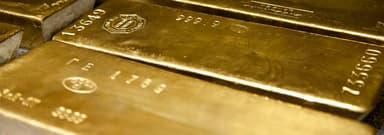Investing in Silver is the Golden Opportunity You Can’t Ignore
Investing in precious metals as physical assets has been a popular choice for investors seeking a safe haven and diversification. Among these precious metals, silver has demonstrated a compelling track record of performance, particularly during financial crises. In this article, we will delve into the historical performance of silver, its resilience during turbulent times, and its promising future outlook. Additionally, we will explore the significance of silver in our everyday lives and highlight compelling reasons to consider silver as an investment.
History of Silver
Silver has a rich history as a form of money and government backing. It was widely used as a medium of exchange and as a basis for currency in various civilizations throughout the world. One notable period was during the era of bimetallism, which prevailed in many countries during the 19th and early 20th centuries. Under bimetallism, both gold and silver were recognized as legal tender, and their values were fixed relative to each other.
In the United States, silver played a significant role in the monetary system with the passage of the Coinage Act of 1792. The act established a bimetallic standard where both gold and silver were used to back the currency. The U.S. dollar was defined in terms of silver and gold, and silver coins, such as the Morgan Silver Dollar and the Peace Dollar, were widely circulated.
However, the use of silver as money and government backing gradually declined in the 20th century. In the United States, the Coinage Act of 1873, also known as the "Crime of ’73," demonetized silver and placed the country on the gold standard. The abandonment of silver backing by governments accelerated with the shift towards fiat currencies, where the value of money is not linked to a physical commodity like silver or gold.
The United States officially ended the silver backing of its currency in 1968 when the Treasury Department halted the redemption of silver certificates for silver bullion. Since then, silver has primarily been used as a commodity and investment asset rather than as a form of government-backed money.
Past Performance of Silver
Silver has long been valued for its intrinsic worth and utility, making it an attractive investment option. Throughout history, silver has displayed impressive price appreciation. Over the past decades, silver investments have outperformed many other traditional investment assets, including mining stocks and bonds. The metal’s scarcity, combined with increasing industrial demand and limited mine supply, has contributed to its price growth.
Safe Haven Investment
During the 2008 financial crisis, silver demonstrated its resilience as a safe haven asset. While stock markets plummeted and traditional investments suffered, silver experienced a substantial increase in past performance and value. Investors sought the stability and value preservation offered by precious metals like silver.
Inflation Hedge
Silver has often acted as a hedge during times of rising inflation and market fluctuations, preserving wealth during times of rising prices. When inflation erodes the purchasing power of fiat currencies, silver’s intrinsic value and scarcity can help protect investors from the erosion of their wealth.
Industrial Demand And Crisis Resilience
Silver’s unique position as both a precious metal and an industrial metal contributes to its crisis resilience. During economic downturns, silver’s industrial demand tends to decrease, but its safe-haven appeal typically offsets this decline, helping support its price.
Silver Squeeze And Reddit-Driven Market Activity
In recent years, silver experienced a surge in interest driven by social media and online communities. In early 2021, there was a movement known as the "Silver Squeeze," inspired by the success of the GameStop stock rally. While the impact of these events on the silver market was short-lived, they underscored the metal’s enduring appeal and the potential influence of retail investors.
Silver’s Performance During Financial Crises
Silver has proven its resilience during times of economic turmoil and financial crises. When markets experience significant volatility, investors often flock to precious metals as a safe haven. Silver, in particular, has been sought after due to its affordability compared to gold. During times of uncertainty, silver has demonstrated the ability to preserve value and act as a hedge against inflation, currency devaluation, and stock market downturns.
Why Invest in Silver?
Silver, with its exceptional electrical conductivity and reflective properties, plays a crucial role in technology, solar energy, and healthcare industries, being utilized in electronics manufacturing, photovoltaic cells, and medical applications due to its antimicrobial properties and diverse range of uses.
Technology
One of the primary applications of silver lies in the realm of technology. Its exceptional electrical conductivity makes it an integral component in electronics manufacturing. From smartphones to laptops, silver is utilized in circuit boards, connectors, and switches to ensure efficient and reliable performance. In addition, silver’s reflective properties are crucial for producing high-quality mirrors, optical instruments, and specialized coatings in industries ranging from automotive to aerospace.
Solar Energy
Furthermore, the solar energy sector relies on silver to capture and convert sunlight into usable electricity, making it an essential ingredient in photovoltaic cells used in solar panels. As the world continues its transition towards sustainable energy sources, the demand for silver in this field is expected to grow significantly.
Healthcare
The importance of silver extends to the healthcare industry as well. Silver’s antimicrobial properties make it an effective tool in combating infections and promoting healing. It is commonly used in wound dressings, bandages, and medical devices to prevent the growth of bacteria and protect against contamination. Silver-coated catheters and implants are employed to reduce the risk of infections in hospitals. Moreover, silver nanoparticles have shown promise in areas such as drug delivery and diagnostics, opening new avenues for advanced medical treatments. With its ability to combat harmful pathogens, silver continues to play a crucial role in maintaining public health and advancing medical science.
Silver vs Gold
When it comes to investing in precious metals, the debate between physical silver and gold often arises. Both metals have their unique qualities and advantages, making the choice a matter of personal preference and financial goals. In order to compare the two precious metals, we first need to have a look at the gold-silver ratio.
Put short, the gold-silver ratio is a measure that indicates how many ounces of silver are required to purchase one ounce of gold. It is calculated by dividing the current price of gold per ounce by the current price of silver per ounce. For example, if gold is priced at $1,500 per ounce and silver is priced at $15 per ounce, the gold-silver ratio would be 100 (1,500/15 = 100).
The gold-silver ratio is often used by investors and traders to assess the relative value of gold and silver and make decisions about their investment strategies.
The Undervaluation of Silver Relative to Gold
According to CPM Group’s 2023 Gold and Silver Yearbooks, the identifiable worldwide above-ground gold and silver reserves were 190,000 metric tons and 1.85 million metric tons respectively.
According to Thomson Reuters’s 2016 World Silver Survey, the identifiable worldwide above-ground silver reserves amount to a mere 71,578 tons, while gold boasts 183,600 tons worth of equivalent reserves.
These staggering figures reveal a startling ratio of 9.7 silver ounces in reserve for every gold ounce. As of May 29, 2023, the value of a single gold ounce is equivalent to an astonishing 83.2 silver ounces. This stark contrast is a far cry from the historical ratio of 16 ounces of silver to one ounce of gold. The current situation suggests that silver is significantly undervalued in comparison to gold, creating a potential opportunity for savvy investors to seize.
Affordability And Accessibility
Silver holds a distinct advantage over gold in terms of affordability. With a lower price point, silver investment becomes more accessible to a broader range of investors. This affordability is especially beneficial for those who have limited funds or wish to diversify their precious metal holdings without committing a significant amount of capital.
Industrial Demand
Silver boasts substantial industrial uses, thanks to its exceptional electrical and thermal conductivity. Industries such as electronics, solar energy, medicine, and photography heavily rely on silver, driving its demand. This industrial demand not only gives silver intrinsic value but also creates market dynamics that can influence its price, presenting potential investment opportunities.
Potential For Higher Returns
While silver prices may exhibit greater volatility compared to gold, it also offers the potential for higher percentage returns. Under certain market conditions, silver prices can experience significant upward movements, making it an enticing option for investors seeking capital appreciation. This higher volatility can bring increased risks but also the possibility of greater rewards.
The Future Outlook for Silver
The future outlook for silver appears bright, supported by several key factors. The rapid advancement of technology and the growing demand for renewable energy sources are driving increased industrial use of silver in sectors such as electronics, solar panels, and batteries. Furthermore, as governments worldwide prioritize sustainability and renewable energy, silver’s exceptional conductivity and its use in photovoltaic cells make it an essential component in powering the clean energy revolution.
The global push for green energy and electric vehicles is likely to create sustained demand for silver. As the world transitions to a more sustainable future, silver’s importance in various industries is expected to rise, potentially leading to a supply deficit and the silver price will appreciate.
The Significance of Silver in Our Everyday Lives
Silver plays a crucial role in our daily lives beyond its investment potential. Its remarkable properties make it indispensable in various industries. Silver is widely used in electronics and electrical equipment, including smartphones, computers, and appliances, due to its exceptional thermal and electrical conductivity. It is also an essential component in the medical field, used in wound dressings, surgical instruments, and antibacterial coatings.
Moreover, silver is extensively employed in the production of solar panels, as it helps capture and store solar energy efficiently. The metal’s reflective qualities make it vital in mirrors, optics, and photography. Silver is even used in water purification systems and in the production of coins and jewelry.
Conclusion
Although people have all different types of investment objectives, investing in silver can be a prudent decision and should be included in one’s portfolio, considering its resilience during financial crises, undervaluation relative to gold, and promising sustainable future outlook. With its diverse range of industrial applications and the increasing demand for renewable energy sources, silver is poised to play an even more significant role in the coming years and decades.
In addition to investing in physical silver, silver bullion coins, and silver stocks, you have the opportunity to acquire exposure to silver prices through the purchase of our Silver Grams, which come with low premiums and spreads. Take the first step towards saving in silver today by enrolling in a new account with us!
for generations.
and protect yourself from inflation
Learn more
- Learning
Why silver stands out among precious metals

- Learning
The Singapore guide to gold savings and gold investments

- Learning
Top 5 reasons every investor should own gold

- Learning
Protect yourself against inflation with savings in gold

- Learning
Our S.T.A.R. Gold Grams are always fully backed by real precious metal
